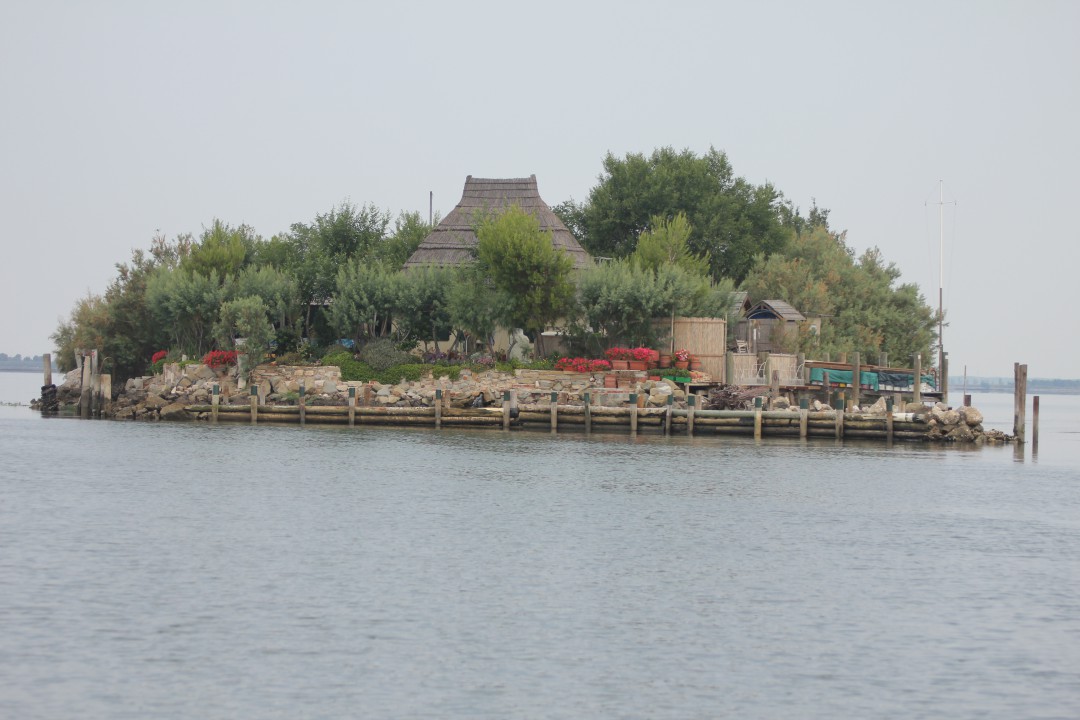Sugli isolotti, le mote, che portano ancora gli antichi nomi gradesi, i pescatori vivevano nei casoni di cannuccia palustre. Ora a restarvi tutto l’anno sono in pochi, ma i casoni rimangono l’emblema della laguna e restano la base d'appoggio per molti gradesi che vivono tuttora di pesca. In alcuni, trasformati in rustiche trattorie durante la bella stagione, è possibile trovare ottimi piatti di pesce, accompagnati da polenta e vino friulano come ad esempio al ristoro ai Ciodi e Fiori de tapo. I casoni hanno una pianta rettangolare con un unico vano, con i lati minori leggermente curvati, con la struttura portante in pali di legno, ricoperti dal tetto formato da uno spesso strato di cannucce palustri raccolte tra giugno e ottobre. Al centro è posto un focolare il cui fumo usciva attraverso il tetto che però non permetteva alla pioggia di entrare. L’arredo era essenziale, costituito da tavolo con panche o sedie, alcune dispense armadi, un angolo era riservato al posto letto. Ai lati del casone potevano essere disposte due finestre mentre la porta è orientata verso Ovest per riparare dal freddo dei venti che soffiano da est. Ogni mota portava fino a tre casoni come abitazione e per gli attrezzi da pesca, alcune “vanese” (orticelli) per la coltivazione di alcuni ortaggi, una “cavana” porticciolo lagunare per il riparo delle barche, stenditori per le reti ed era circondata da vegetazione di tamarici.

